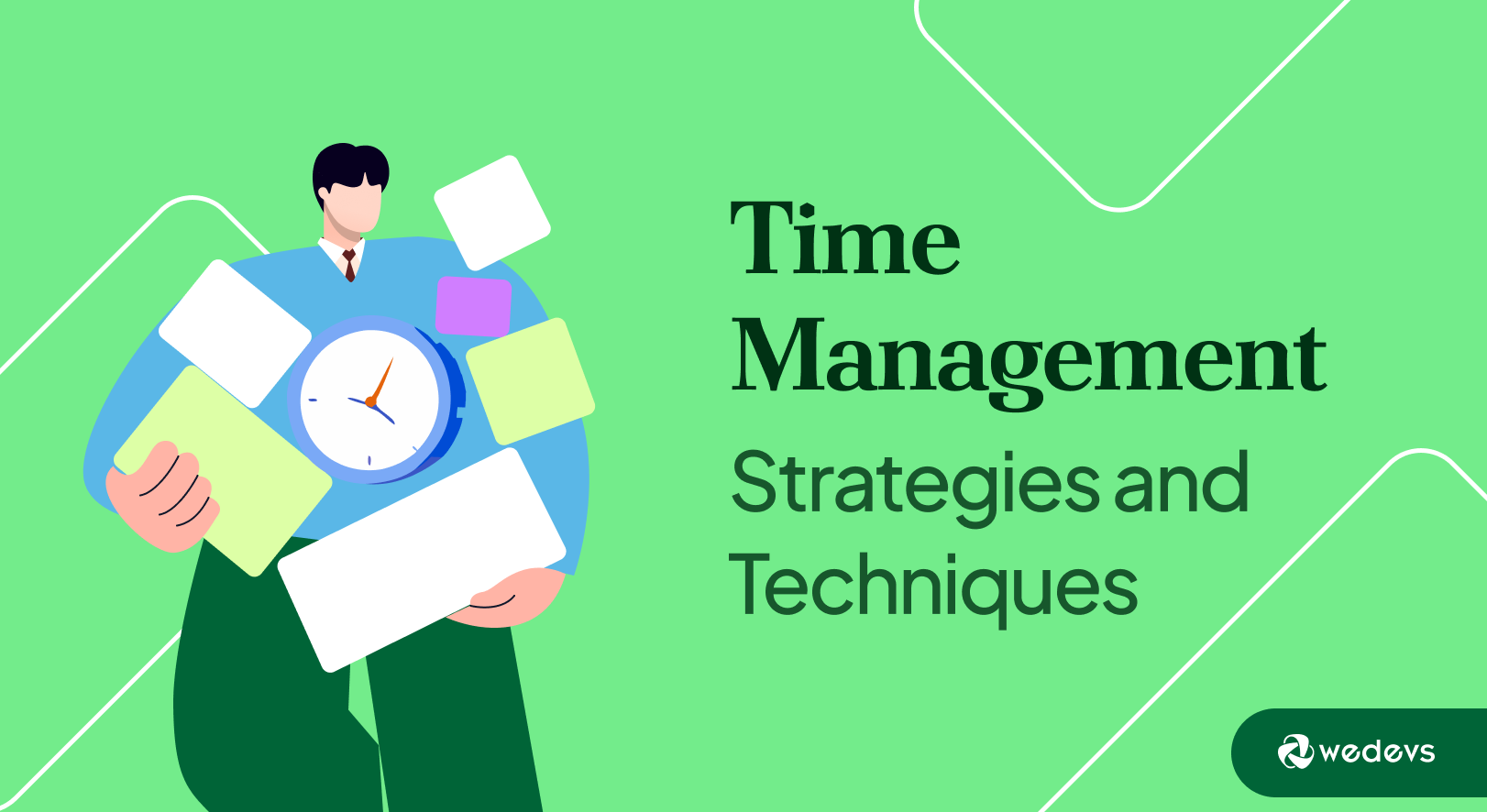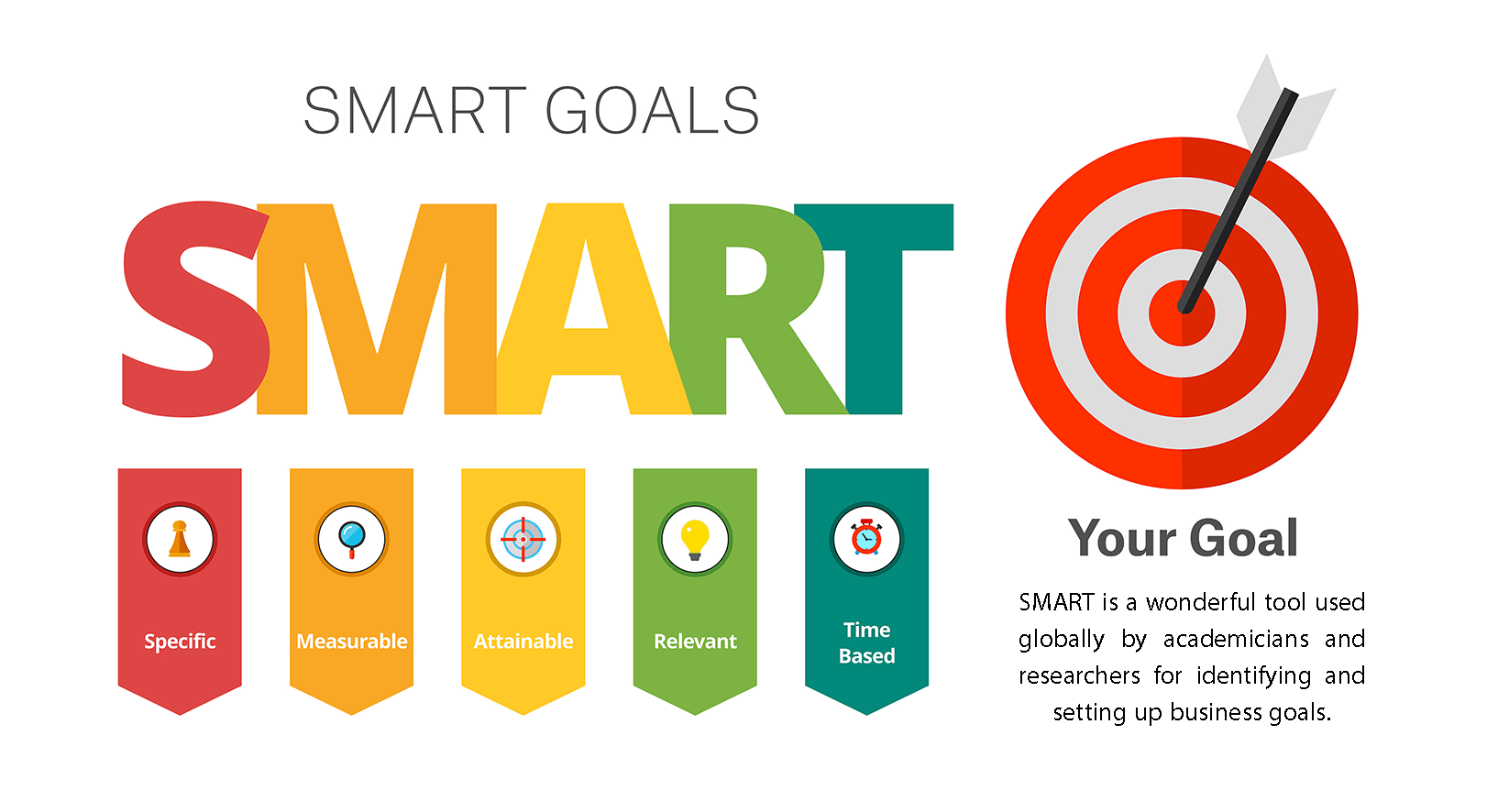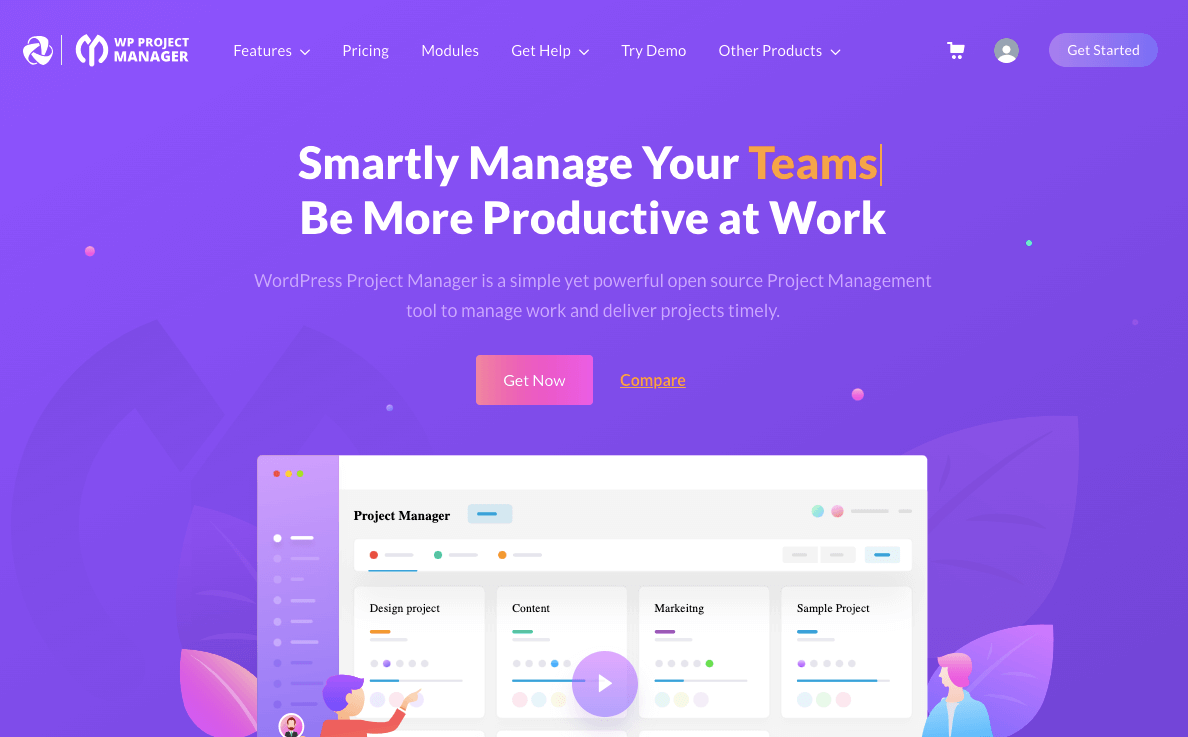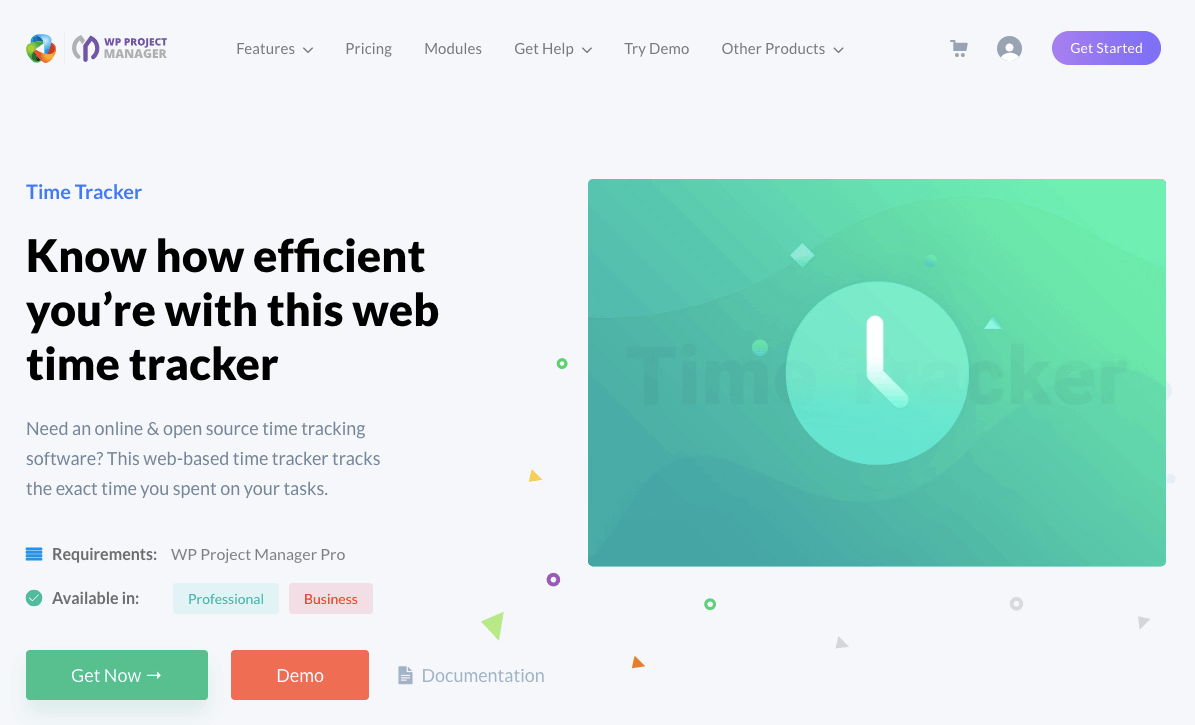
25+ Effective Time Management Strategies and Techniques
Managing time effectively can feel like an uphill battle. Between juggling multiple tasks, meeting tight deadlines, and balancing work with personal life, many struggle to stay on top of their to-do lists.
If you’re constantly feeling overwhelmed, stressed, or like there just aren’t enough hours in the day, you’re not alone. The good news is that with the right time management strategies, you can regain control.
If you’re a busy professional, a student trying to manage assignments, or simply someone looking to increase efficiency, these strategies are designed to tackle your biggest time management pain points and help you work smarter, not harder.
This post will guide you through proven time management strategies and techniques to help you prioritize tasks, eliminate distractions, and make the most of your time.
Let's start with why it matters for you to manage time with the right strategies and techniques.
Why Time Management Matters for You
Time is money. If you can't properly utilize your time, then you will miss out on great opportunities and you will fall behind. Especially in this era. With so much happening and the advancement of technology has opened so many new doors for us.
If you can use your time effectively, then you will be able to explore every door.
Effective time management methods are crucial for success. Let's explore a few reasons why time management strategies are essential:
- Increased Productivity: Prioritize tasks, eliminate distractions, and work efficiently, leading to increased productivity and output.
- Reduced Stress: Avoid feeling overwhelmed and stressed, leading to a healthier work-life balance.
- Improved Focus: Stay focused on your tasks, reducing the likelihood of procrastination and distractions.
- Better Decision-Making: Have a clear understanding of your time constraints and make more informed decisions about how to allocate your resources.
- Enhanced Goal Achievement: Set realistic targets and manage your time effectively to achieve your objectives and accomplish your dreams.
- Increased Job Satisfaction: Feeling in control of your time and workload can lead to greater job satisfaction and fulfillment.
TimeWatch found that 91% of people link better time management to reduced stress, and 90% believe it's key to increased productivity.
These studies demonstrate a clear correlation between effective time management, reduced stress, and increased productivity.
Read the following section to learn more about effective time management strategies so you can significantly improve work performance and well-being.
15+ Best Time Management Strategies and Techniques

Effective time management involves setting clear goals, prioritizing tasks, eliminating distractions, and using techniques like the Pomodoro Technique and time blocking.
By utilizing your time strategically, you can make the most of it and accomplish more than you ever thought possible.
Learn more about our practical time management strategies and techniques for overcoming common time management challenges.
1. Plan Your Day the Night Before for a Productive Start
Spending just 10-12 minutes daily on planning can lead to a 25% increase in performance and productivity, saving you nearly 2 hours each day.
According to Brian Tracy's Law of Planning
Before heading to bed, spend a few minutes reviewing the tasks and priorities for the next day. This simple habit ensures that you start your morning with a clear game plan, eliminating wasted time trying to figure out what needs to be done.
Also, set aside the clothes you will wear for the next day.
This reduces decision fatigue and allows you to dive straight into important tasks, fostering a productive mindset from the moment you wake up.
2. Prioritize Tasks to Determine What Matters Most
People spend 51% of their average workday on low-value tasks.
Hubstaff
So, you must first identify the tasks' value. Task prioritization is one of the most important aspects of time management. Follow any of your preferred methods to determine which task deserves your attention first. We suggest you use the Eisenhower Matrix to set priorities.
A Development Academy study found that 50% of users reported a significant increase in control over their daily tasks when using the Eisenhower Matrix.
The Eisenhower Matrix is a powerful tool to help you prioritize tasks based on urgency and importance. By categorizing your tasks into four quadrants, you can focus on what truly matters. Here’s a table that represents the Eisenhower Matrix:
| Urgent | Not Urgent | |
|---|---|---|
| Important | Do First Tasks that are both urgent and important require immediate attention. | Schedule Important but not urgent tasks that can be planned for later. |
| Not Important | Delegate Urgent but less important tasks that can be delegated to others. | Eliminate Tasks that are neither urgent nor important and can be minimized or eliminated. |
This table captures the essence of the Eisenhower Matrix, making it easy to visualize how to categorize and prioritize tasks.
3. Set SMART Goals to Stay Focused

Clear goals are essential for time management. By setting Specific, Measurable, Achievable, Relevant, and Time-bound (SMART) goals, you can maintain focus on what you need to accomplish. SMART goals give your tasks direction and make it easier to track your progress, helping you stay committed and motivated over time.
4. Set Time Limits for Tasks to Create a Sense of Urgency
To prevent tasks from dragging on, assign time limits using techniques like time blocking. It is a time management technique that involves scheduling specific time slots for different tasks. By breaking down your day into dedicated time blocks, you can improve your focus and productivity and reduce distractions.
Additionally, apply the Pareto Principle (80/20 Rule), which suggests that 80% of your results come from 20% of your efforts. Focus on the key tasks that drive the most value, and limit the time spent on less impactful activities to boost overall productivity.
And don't forget Parkinson's Law when setting deadlines. This law states that work expands to fill the time available for its completion. This means that if you give yourself a week to complete a task, it will likely take a week, even if it could be done in a day. To avoid the negative effects of this law, it's important to set realistic deadlines.
5. Apply the Pomodoro Technique for Breaks
The Pomodoro Technique involves working in focused intervals, traditionally 25 minutes, followed by a 5-minute break. However, another variation—52/17 rule—suggests working for 52 minutes and then taking a 17-minute break. This method helps maintain high concentration levels during work periods while providing adequate time to rest and recharge during breaks, boosting long-term productivity.
6. Divide Larger Projects into Smaller, Manageable Tasks

Large projects can feel overwhelming and lead to procrastination. To avoid this, break them down into smaller, manageable tasks. This makes the project less intimidating and allows you to make steady progress. By setting mini-deadlines for each smaller task, you maintain momentum and can track your progress more effectively.
7. Delegate Low-Priority Tasks to Free Up Time for Critical Work
Recognize tasks that don't require your direct attention or expertise and delegate them. Whether it’s administrative work, routine tasks, or low-priority responsibilities, delegation allows you to focus on higher-value tasks that directly impact your goals. Leveraging team members or external resources to handle these tasks can improve your efficiency and ensure critical work gets done.
8. Avoid Multitasking to Maintain Focus and Increase Efficiency
The European Research Journal revealed that multitasking can reduce productivity by as much as 6 hours weekly for an individual.
Multitasking often reduces the quality of work and slows the progress. By focusing on one task at a time, you can complete it faster and with greater accuracy. Single-tasking allows you to give your full attention to each task, improving overall efficiency and reducing errors.
9. Limit Distractions
To remain productive, minimize interruptions from your surroundings, whether it’s social media, unnecessary notifications, or a noisy environment. Create a workspace that helps you concentrate by using tools like website blockers, silent notifications, or noise-canceling headphones to limit distractions.
10. Use Task Management Tools to Stay Organized and Track Progress
Task management tools are essential for managing a personal to-do list or working on a team project. These tools allow you to break down larger tasks into manageable steps, set deadlines, and monitor progress in real-time.
By providing an overview of upcoming tasks and their priorities, task management tools help reduce confusion and ensure nothing falls through the cracks. Some popular task management tools include Trello, Asana, and Monday.com, which are user-friendly and scalable for various project sizes.

If you're a WordPress user, a great option is WP Project Manager Pro. It’s a powerful plugin that offers features like task creation, deadline setting, team collaboration, and progress tracking—all within your WordPress environment. It’s an excellent choice for anyone managing a website or business using WordPress, as it simplifies project management without needing external tools.
Also Read: How to Improve Team Productivity Using WP Project Manager
11. Practice Saying No to Avoid Overcommitting and Losing Focus
When your schedule is already pushing its maximum capacity, it's not only permissible, but important, to say no and to feel comfortable setting limits.
-Dr. Carol Williams-Nickelson (APA, 2005)
It's easy to overcommit, but doing so can dilute your focus and lead to burnout. By learning to say no to unnecessary tasks or commitments, you can preserve your time for the most important work. Politely declining requests that don’t align with your goals helps you stay focused and productive.
12. Batch Similar Tasks Together to Improve Workflow Efficiency
Grouping similar tasks, like answering emails or making phone calls, allows you to complete them more efficiently. By staying in the same mental mode for a longer period, you reduce the time it takes to switch between tasks and improve your workflow.
13. Regularly Review and Adjust Your Time Management Strategies
Time management is not a one-size-fits-all approach. What works today may not work next month. Regularly reviewing your time management strategies allows you to identify areas for improvement, adapt to new responsibilities, and ensure your methods align with your current goals. This helps fine-tune your productivity system, keeping it efficient and effective over time.
14. Look Ahead—Plan for the Coming Weeks and Months
In addition to daily planning, looking at the bigger picture is crucial. Planning weeks or even months in advance helps you stay proactive rather than reactive. By setting long-term goals and identifying upcoming deadlines, you can allocate time to larger projects and avoid the last-minute rush. This forward-thinking approach reduces stress and ensures smoother progress toward your objectives.
15. Stay Healthy to Boost Productivity and Maintain Energy Levels

Good health is foundational to productivity. Prioritizing adequate sleep, regular exercise, a balanced diet, and mental wellness boosts energy levels and keeps you focused throughout the day. When you're healthy, both physically and mentally, your ability to manage tasks and maintain high levels of productivity improves significantly.
If you're an employer, read this: 8 Ways To Support Your Employee Mental Health
16. Give Yourself a Reward to Stay Motivated and Celebrate Success
Rewarding yourself after completing tasks or achieving milestones helps maintain motivation. Whether it’s a short break, a favorite snack, or a day off after a major project, celebrating your success keeps you energized and ready for the next challenge. Positive reinforcement makes time management sustainable and more enjoyable over the long term.
17. Take Breaks from Work to Recharge and Avoid Burnout
40% of Generation Z and nearly 25% of millennials are considering quitting their jobs within the next two years due to mental health concerns, stress, and burnout. Moreover, one-third of these young professionals are prepared to leave their current positions, even without a new job lined up.
Deloitte Insights
While short breaks can be beneficial, taking longer breaks and vacations is essential for your overall well-being and productivity. These extended periods away from work allow you to fully recharge your batteries, reduce stress and burnout, boost creativity, and improve your mental and physical health.
To make the most of your longer breaks and vacations, it's important to plan, set a budget, choose a destination that will disconnect you from work, and take care of yourself. By following these tips, you can ensure that your time off is truly restorative and enjoyable.
Remember, taking longer breaks is not a luxury, but a necessity for your overall well-being and productivity. By planning and taking advantage of these opportunities, you can come back to work feeling refreshed, rejuvenated, and ready to take on new challenges.
10 Best Time Management Techniques and Styles

We've already mentioned a few time management techniques in the above sections. If you're interested in learning more about the most practiced time management techniques and styles, the following table can help you. We've also specified which technique is ideal for whom.
| Technique | Description | Best For |
|---|---|---|
| Pomodoro Technique | Work in focused intervals (25 minutes), followed by short breaks (5 minutes). After 4 cycles, take a longer break. | Improving focus and preventing burnout through regular breaks. |
| Time Blocking | Allocate specific blocks of time to tasks or activities, creating a structured daily schedule. | People who want to control their time and prioritize tasks. |
| Eisenhower Matrix | Prioritize tasks by urgency and importance, categorizing them into 4 quadrants: Do, Schedule, Delegate, Eliminate. | Identifying and focusing on high-priority tasks. |
| Eat That Frog | Tackle your most difficult or important task first thing in the day. | People who procrastinate or struggle with large tasks. |
| Pareto Principle | Focus on the 20% of tasks that generate 80% of results (80/20 rule). | Streamlining efforts to focus on tasks with the highest value. |
| Getting Things Done (GTD) | Capture all tasks in a system, then process and prioritize them for action. | Organizing complex tasks and managing multiple projects. |
| ABC Method | Classify tasks into 3 categories: A (urgent & important), B (important but not urgent), C (nice to do). | Simple prioritization of tasks based on importance and urgency. |
| Timeboxing | Set fixed periods (timeboxes) for completing tasks or projects. | Creating urgency and ensuring tasks are completed on time. |
| Rapid Planning Method (RPM) | Focus on results, purpose, and massive action. Define the outcome, why it's important, and steps to achieve it. | High achievers needing a clear plan of action for ambitious goals. |
| Parkinson’s Law | Set tight deadlines as work expands to fill the time allotted. | Reducing procrastination and completing tasks more efficiently. |
This table provides a clear overview of the various time management techniques and styles that you can choose from to improve your productivity and efficiency.
Manage Your Time More Effectively with a Web Time Tracker
Time trackers allow you to optimize your workflow by recording and analyzing your daily activities. This not only increases awareness of your productivity but also helps you identify areas where you may be losing time or need to improve efficiency.

For WordPress users, WP Project Manager Pro offers a time-tracking extension. The software allows you to track time spent on tasks, pause and resume timers, and bill clients based on hours worked. It also integrates with other WordPress plugins, like WooCommerce and BuddyPress. Here are the key features of the WP Project Manager Pro Time Tracker:
- Accurate time tracking: Track time spent on tasks with precision.
- Task-based tracking: Assign time to specific tasks within projects.
- Client-based tracking: Track time spent on projects for individual clients.
- Pause and resume timers: Easily pause and resume timers to accurately track your time.
- Billing integration: Integrate with WooCommerce or BuddyPress to bill clients based on hours worked.
- Reporting and analytics: Generate detailed reports on your time usage.
- Customizable settings: Configure the time tracker to meet your specific needs.
Note: The Time Tracker extension is only available in the Professional and Business plans of WP Project Manager Pro and the Professional plan starts at $149/ year for 5 Domain.
Final Thoughts on Time Management Strategies and Techniques
Mastering time management is essential for each individual. By adopting the right techniques, whether it's breaking tasks into manageable pieces, prioritizing high-impact activities, or setting focused time intervals, you can take control of your schedule and work more efficiently. The key is to find a system that suits your workflow and personal preferences.
No single strategy fits everyone, so don’t hesitate to experiment with different methods until you discover what boosts your productivity. Tools like time trackers and project management platforms can further streamline your efforts and help you stay on track. With consistent application of these strategies, you'll not only accomplish more but also gain a greater sense of fulfillment in your work.